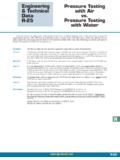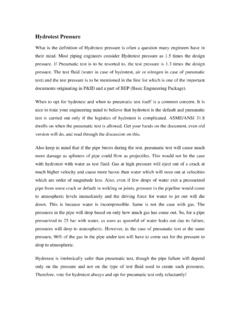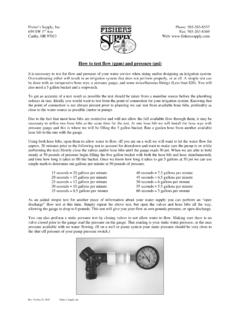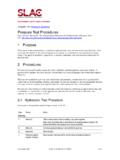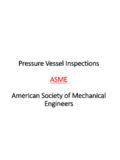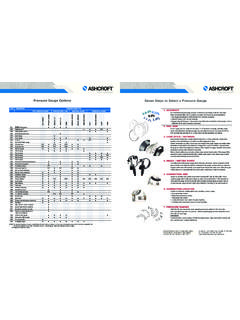Transcription of Test
1 PPV Fans Water Test Comparison Fan drives air into a doorway Flow in Stream driving water in the Inlet Hole pressure in the structure (compressed air) Driving pressure pressure in the tub (increase Water Level) Air flow out of the structure, ventilation Flow out Water flowing out of the tub Outlet Hole Test Conventional PPV Cone Approach High Volume/Low PressureBlowHard PPV Jet Approach Low Volume / High pressure : Approach: High Volume, Low pressure Fans provide a high volume cone of pressurized air to seal the inlet door increasing pressure inside the structure. (A wide cone area results in low pressure ) Approach: Low Volume, High pressure Fans provide a low volume jet of high velocity air to penetrate the inlet door increasing structure pressure .
2 (A concentrated jet area results in high pressure )Comparison: High volume water stream flowing from a : High velocity water jet shooting from a nozzle. **The hose uses a high volume of water at low pressure to seal the hole and drive water into the tub. **The nozzle has a low volume of water at high pressure to penetrate the hole and drive water into the tub. HOSE FREE FLOW: DRIVING pressure : 1X OUTLET FLOW: 1 XNOZZLE FREE FLOW: 1X DRIVING pressure : 3X OUTLET FLOW: 2 XInlet Hole High Outlet Flow Low water level = Low driving pressure High water level = High driving pressure Low water level = Low driving pressureResult: Low outlet flow High water level = High driving pressureResult: High outlet flow Inlet Hole Low Outlet Flow Positive pressure Ventilation works on ) Build pressure ,2) pressure forces ventilationThe illustration uses a common sense comparison of water pressure and flow to understand key variables of PPV.
3 **The test compares the effectiveness of PPV Cone vs PPV Jet.** Driving pressure = 1X Driving pressure = 3X HOSE FLOW = FLOW = 1 XOUTLET FLOW = 2 XOUTLET FLOW = 1X Results **The BlowHard PPV Jet Approach results in clearing the structure faster because of the higher pressure . In addition, this test shows fans rated at high CFM may not be capable of building sufficient pressure for ventilating a structure. With a Jet Approach to PPV the BlowHard BH 20 is able to build more pressure than the conventional approach resulting in increased ventilation. The BH 20 is capable of air movement equivalent to fans rated 15,000 CFM or higher in real world conditions.
4 Notes: Approximate hose water stream diameter is .75 inches; approximate nozzle water stream diameter is .25 inches. To accurately simulate the two theories of sealing the door and penetrating the door the inlet hole is sized accordingly. The inlet hole diameter is set to .625 inches. 1. Cone Approach: An inlet hole diameter of .625 inches will ensure the .75 inch stream of water from the hose can seal the hole but allow maximum water flow into the tank. 2. Jet Approach: An inlet hole diameter of .625 inches will maximize potential leakage around inch jet stream of water from the nozzle. This potential leakage tests the ability of the jet stream to utilize entrainment and momentum to maximize water flow into the tub and ability to maintain tub pressure .
5 Hose Nozzle Cover hole with high water volume at low pressure ApproachPenetrate hole withlow water volume at high pressureGood flow into tub at low pressure , flow into the tub dwindles as tub pressure increases. Flow Goodflow into the tub at low pressure , maintains flow into tub as pressure builds. Low. Outside edge of stream splashes outward as it hits the perimeter of the inlet hole. Reached equilibrium at a low pressure . Hose distance from the inlet hole was very limited for maximum pressure . As an additional test water was added above equilibrium; the increased tub pressure overcame the hose pressure resulting in water flowing out the inlet hole.
6 There was a visible clash of the two streams of water outside the tub. PressureHigh. Minimal to zero water leakage around inlet hole at low pressure . Water begins to leak around jet stream at high pressure but the jet continued to drive water into tub. Nozzle distance from hole had little impact on ability to build pressure . Jet continued to drive water into the tube, did not reach equilibrium/maximum pressure . Low Outlet Flow (1X outlet the stream of water in test)Result High Outlet Flow(2X outlet the stream of water in test)
